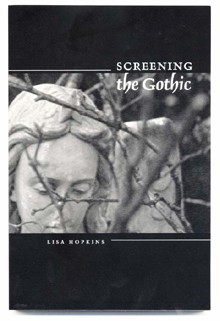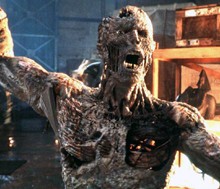| |
Is it not a little gothic that the University of Texas Press has published a guide to the gothic in film written by a professor from Sheffield, England? A "sense of repetition and recurrences" is a key element of the genre, writes author Lisa Hopkins in Screening the Gothic, and here is merry old England again intruding on the New World, telling us how to do a proper gothic adaptation.
Yet, Hopkins' densely written guide is not akin to Prince Charles' criticism of American English (we "invent all sorts of new nouns and verbs and make words that shouldn't be"). Hopkins reminds readers that the genre developed in English literature during the late 18th and early 19th centuries, but rather than decry its pop-culture mutations, she wants to examine how it has been adapted by cinema and what that says about contemporary society. The gothic in American movies in particular, she argues, is rather like the characters that inhabit Mary Shelley's late-gothic masterpiece, Frankenstein: Where the appearance is perfect, the spirit is lacking; where the exterior has been neglected, a true soul may emerge.
| Campy, but a little goth, too: Arnold Vosloo plays the incensed Imhotep in The Mummy Returns, just one of several movies Lisa Hopkins flays in Screening the Gothic. |
The most interesting chapter, in fact, is "Gothic and the Family," in which Hopkins introduces the dual meaning buried in The Mummy Returns with an entertaining description of Margaret Thatcher's appearance at a political rally. "The word mummy has two senses - an affectionate diminutive of mother and an embalmed corpse - and, depending on one's political affiliation, either might seem to be an appropriate description of Thatcher," she instructs, going on to demonstrate that the delightfully snarky British press presented it both ways. From that lively, and refreshingly non-academic, introduction, Hopkins argues that the Gothic has reemerged in American movies ostensibly designed for children, such as A Series of Unfortunate Events, in which the family is a troubling source of mystery and possibly threat.
| Screening the Gothic By Lisa Hopkins University of Texas Press $19.95, 208 pages ISBN: 0292706464 |
By Elaine Wolff

















